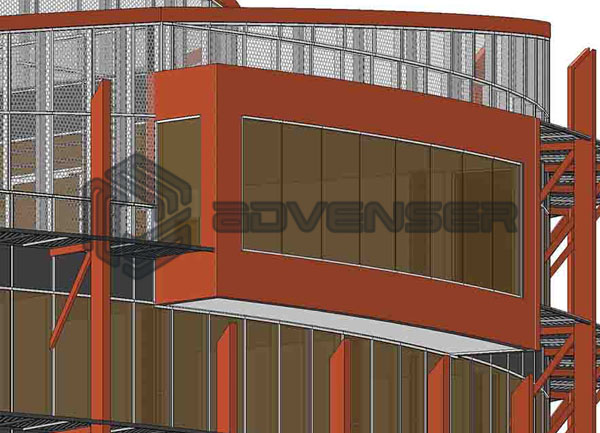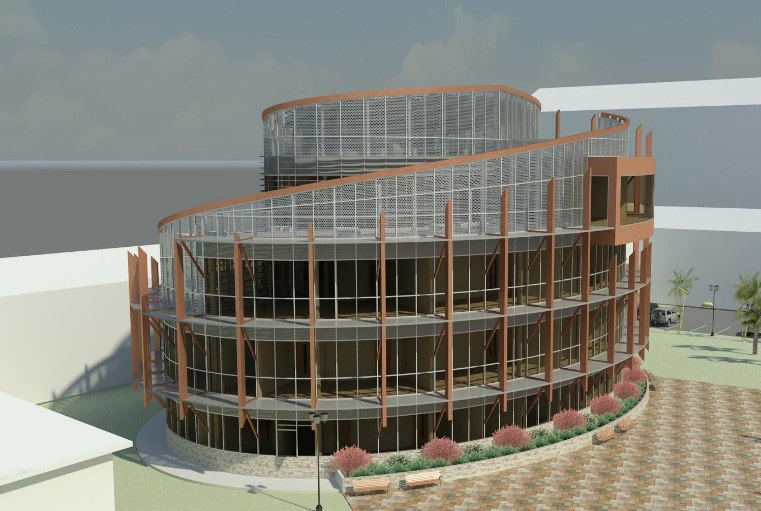Few buildings have achieved global recognition as quickly as Dubai’s Museum of the Future. With its flowing torus geometry, open central void, and illuminated Arabic calligraphy wrapping the façade, the structure stands as a powerful representation of innovation and progress. Beyond its iconic appearance, however, lies a complex engineering effort that made such a bold architectural vision structurally possible.
Advenser played a key role in this effort through detailed reinforcement modeling of the ring beam foundation—an element hidden from view, yet fundamental to the building’s stability and long-term performance.
Foundation Engineering for an Architectural Icon
While attention is often drawn to the Museum’s dramatic steel superstructure, the foundation beneath it demanded an equally advanced level of engineering. The ring beam foundation was responsible for supporting and distributing loads from the massive steel framework above, making accuracy in reinforcement detailing non-negotiable.
Unlike conventional foundations, this ring beam followed a curved, elliptical geometry that challenged traditional detailing practices. Straightforward rebar layouts were not an option. Each reinforcement bar had to be carefully shaped and positioned to follow the complex curvature, ensuring structural continuity and constructability.
To add to the complexity of the Museum of the Future project, the foundation had to align precisely with steel base connections transferring loads from the superstructure. Any deviation between reinforcement layouts and steel interfaces could have led to conflicts during construction. Absolute coordination was essential.
Addressing Complexity Through BIM-Driven Detailing
The technical demands of the project called for a digital-first approach. Advenser relied on Building Information Modeling, with Tekla Structures serving as the core platform for reinforcement modeling and coordination.
A fully developed 3D rebar model formed the backbone of our workflow, offering several critical advantages:
Accurate Modeling of Curved Geometry
The irregular shape of the ring beam required every bar to be modeled individually. Tekla’s 3D environment enabled precise control over bar placement, spacing, and bending—far beyond what traditional 2D drawings could support.
Multi-Disciplinary Coordination
Since the steel superstructure was designed by a separate team, seamless integration was essential. The BIM model allowed reinforcement cages and steel base plates to be aligned accurately, ensuring smooth load transfer and constructible connections.
Early Clash Resolution
Digital simulation of the foundation made it possible to detect and resolve clashes well before construction began. This proactive approach reduced on-site risks and eliminated the need for costly corrections.
Reliable Bar Bending Schedules
From the 3D model, detailed and accurate Bar Bending Schedules were generated. These schedules supported efficient fabrication and ensured that site teams could place reinforcement exactly as intended.
Through this BIM-centric process, a highly complex foundation was transformed into a clear, coordinated, and build-ready solution.
Explore more about Advenser’s Rebar Detailing Services.
Precision Under Strict Timelines
In addition to technical challenges, the project operated under firm delivery timelines. As a high-profile development backed by the Dubai government, the Museum of the Future followed a tightly controlled schedule, leaving no margin for delays.
Advenser responded with a focused and agile execution strategy. The team mobilized quickly, assigned experienced detailing specialists, and leveraged automation within the BIM workflow to accelerate delivery without compromising quality.
Rather than taking shortcuts, efficiency was achieved through disciplined processes, close internal coordination, and extensive use of digital tools. Every output met rigorous quality standards while staying aligned with the project schedule.
The Value of Invisible Engineering
Rebar detailing is rarely seen once construction is complete, yet it plays a decisive role in structural safety and performance. In the case of the Museum of the Future, this “hidden” work was especially critical.
The precision of the ring beam reinforcement ensured uniform load distribution, seamless interaction between foundation and superstructure, and long-term structural reliability. Without such accuracy at the foundation level, the building’s distinctive form would not have been feasible.
This project serves as a reminder that iconic architecture relies just as much on unseen engineering as on visible design.
What the Project Represents for Advenser
Capability in Complex Geometry
Non-standard forms and challenging geometries are areas where Advenser consistently delivers constructible solutions.
Advanced BIM Expertise
Strong command of Tekla Structures and BIM workflows enables precise coordination across disciplines and project teams.
Speed with Discipline
Even under tight timelines, quality and accuracy remain uncompromised.
Global Engineering Standards
Contributing to a landmark of international importance demonstrates the ability to perform at the highest professional benchmarks.
Conclusion
The ring beam foundation of the Museum of the Future tells a story beyond reinforcement bars and concrete. It is a story of engineering rigor, digital precision, and collaborative execution supporting an ambitious architectural vision.
At Advenser, contributing to this project meant ensuring that the structure’s most critical elements—though hidden—were engineered with absolute accuracy. As the Museum continues to inspire visitors with its vision of tomorrow, we take pride in knowing that our work beneath the surface helped turn that vision into reality.
It stands as a lasting example of Advenser’s commitment to precision, innovation, and the future of construction engineering.




